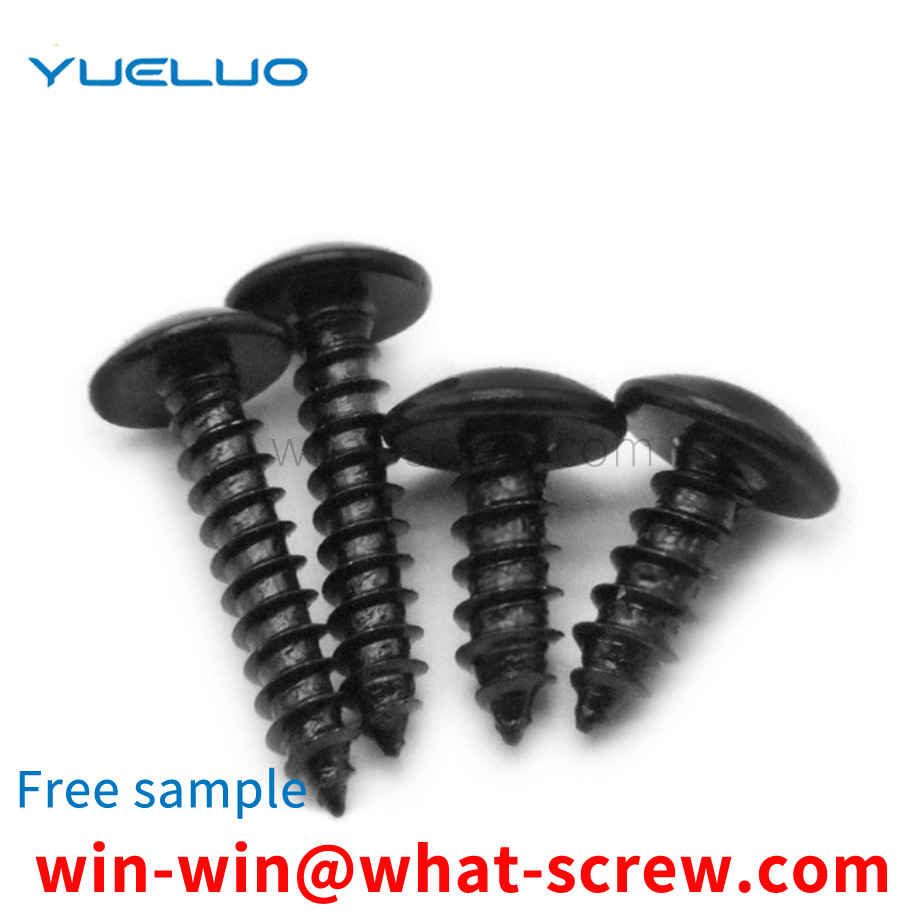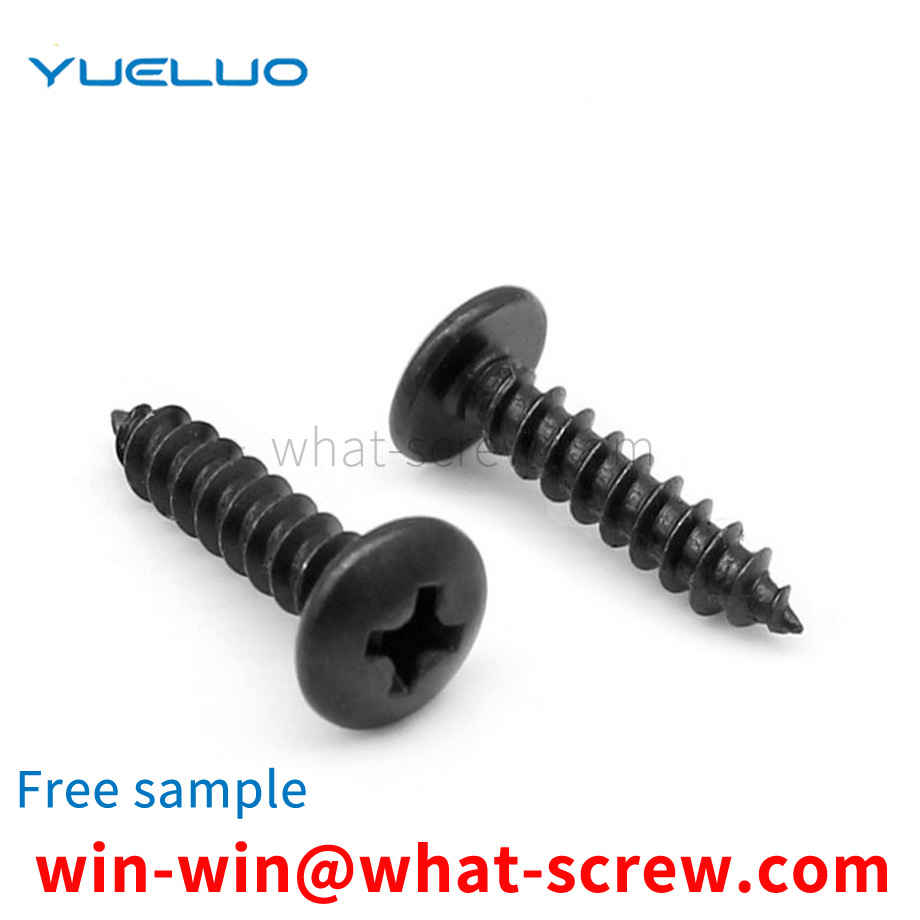The machinery industry is one of the main users of fasteners. Due to China's late understanding of the important position of mechanical basic parts in the machinery industry and a long-term lack of investment, the entire industry has a poor foundation, weak foundation and weak strength. Especially with the improvement of the level of the main engine in China, the bottleneck phenomenon that the mechanical basic parts lag behind the main engine has become increasingly apparent. Today, although the state has given certain support in technology introduction, technological transformation, scientific research and development, etc., there is still a big gap compared with the current market demand and foreign levels. Unstable quality, high early failure rate and poor reliability. Fasteners are the main basic products in the machinery industry, and the development of the machinery industry also puts forward higher requirements for fastener products. Domestic ordinary standard fasteners have always been in oversupply, while high-end fasteners (high temperature, special-shaped, titanium-plastic composite, special performance and other fasteners) are in short supply, and they also rely on imports. The State Machinery Bureau lists ordinary standard fasteners as restricted development products, and high-strength special-shaped fasteners as currently encouraged development products. With the improvement of the country's industrialization level and technological progress, the use of high-strength fasteners has gradually increased.
When the iron pot is manufactured, the iron head is connected to the iron pot body through rivets, and then the pot handle is set through the iron head, and the iron head connects the pot handle and the iron pot body together. However, when the iron head is installed, the position may be inaccurate. At this time, it is necessary to remove the rivet and reinstall the iron head. At present, the removal of rivets is completely done manually, that is, workers use screwdrivers to unscrew the rivets, which is difficult to remove, wastes a lot of manpower, and has low work efficiency, thereby reducing production efficiency.
The main categories of screws include ordinary screws, machine screws, self-tapping screws and expansion screws. Cap screws used to be limited to full-thread fasteners. Hex cap screw and Hex bolt Hex bolt As the name suggests, it is a male threaded fastener with a hexagonal head, designed to be turned with a wrench. According to the ASME B18.2.1 standard, the head height and shank length tolerance of the hexagon head screw (Hex cap screw) is smaller than that of the general hex bolt (Hex bolt), so the ASME B18.2.1 hexagon screw is suitable for installation in all hexagon bolts that can be used. places, also including places where the large hex bolts are too large to be used. Socket cap screw (also known as socket head screw or) is a screw with a hexagonal inner hole on the head, which can be tightened or loosened only after a hexagonal ruler (hex key, Allen wrench or Allen key) is inserted into the inner hole. The most commonly used hexagon socket head screws are cylindrical head screws with a head diameter of about 1.5 times the main diameter of the thread (1960 series). Countersunk head cap screw. The counterbore design allows the screw head to rotate without being exposed on the surface of the fixed object, so it is mostly used in places where the surface is small and traditional wrenches are inconvenient to use. Machine screw is generally a screw (4#~12#) with a diameter less than ¼ inches, usually full teeth and rotated by a screwdriver, such as slotted, cross or hexagon socket. Wood screws, machine screws; but can be divided into many categories according to different uses; machine screws can be divided into longitudinal tightening screws and horizontal expansion screws; according to the thread can also be divided into: A: Triangular thread (60 degrees ) : combined/locked/expanded B: triangular thread for pipe (55 degrees): combined/locked 3) C: trapezoidal thread (30 or 29 degrees): power transmission D: square thread (90 degrees): power transmission stainless steel screw Stainless Steel Anti-Drop ScrewsStainless Steel Anti-Drop Screws Machine (Treadmill) Screws And Shafts For Motorcycle Or Bicycle Needle Car Screws, Axes Screws And Shafts For Sewing Macing Socket Set Screws Stainless Steel Wide Thread ScrewsStainless Steel Coarse Thread Screws Stainless Steel High-Low Thread Screws Stainless Steel Machine Screws Stainless Steel Self Drilling Screws Stainless Steel Self Tapping Screws Stainless Steel Self Tapping Screws Stainless Steel Thread Cutting Screws Stainless Steel Triangle Stainless Steel Tri-Lobular Thread Screws Model Description P refers to the head type is PAN head; A refers to the pointed tail teeth, B refers to the flat tail teeth, namely PA round head pointed steel teeth, PB round head flat mouth steel teeth. Self-tapping type: ◆Round head self-tapping screw PA ◆Round head flat tail self-tapping screw PB ◆Round head cutting tail self-tapping screw PT ◆Round head belt self-tapping screw PWA ◆Round head belt and flat tail self-tapping PWB ◆Round head belt Jiecut tail self-tapping PWT ◆Countersunk head self-tapping screw KA ◆Countersunk head flat tail self-tapping screw KB ◆Countersunk head cut-tail self-tapping screw KT ◆Semi-countersunk head self-tapping screw OA ◆Big head self-tapping screw BA ◆Big head flat tail self-tapping screw BB ◆Large flat head self-tapping screw TA ◆Large flat head flat tail self-tapping screw TB ◆Large flat head cutting tail self-tapping screw TT ◆Thin head self-tapping screw CA ◆Thin head flat tail self-tapping screw CB ◆Cup head hexagon socket self-tapping HA ◆Drywall/Wallboard/Fiber Nails Machine Wires: ◆Round Head Machine Screw PM ◆Round Head Machine Screw PWM ◆Large Flat Head Machine Screw TM ◆Countersunk Head Machine Screw KM ◆Half Countersunk Head machine screw OM ◆Large head machine screw BM ◆Thin head machine screw CM ◆Cup head machine screw HM
Screws are commonly found in machinery, electrical appliances and buildings. They are generally made of metal or plastic, cylindrical in shape, and grooves engraved on the surface are called screw threads. The main function of the screw is to join two objects, or to fix the position of an object. Screws can often be removed or re-tightened at will without compromising their efficiency. Generally, the diameter of the top of the screw is larger, and the common ones are round, square or regular hexagon. If the top is regular hexagon, you can turn the screw with a wrench. If the top is round, there will also be grooves on the front of the top, which is convenient for use screwdriver to turn the screw. *The common grooves are one-shaped, cross-shaped and square, and there are other shapes. The grooves of the existing screws are often easy to wear, which makes the screws inconvenient to use and causes the screws to be scrapped. In addition, because the screws have no chip removal The structure makes it difficult for the screw to penetrate other objects, which affects the efficiency of the screw.
Commonly used national standard GB41Ⅰ type hexagon nut——C grade GB6170Ⅰ type hexagonal nut——, B grade GB6171Ⅰ type hexagonal nut-fine thread-, B grade GB6172 hexagonal thin nut——, B grade - chamfering GB6173 hexagonal thin nut—— Fine thread—, B grade GB6174 hexagonal thin nut—B grade—without chamfering
We have many years of experience in the production and sales of screws, nuts, flat washers, etc. The main products are: hand percussion flat cap rivets, small bolts, slotted screws, hollow groove pins and other products, we can provide you with suitable products for you. Fastener Solutions.



















 Service Hotline
Service Hotline




